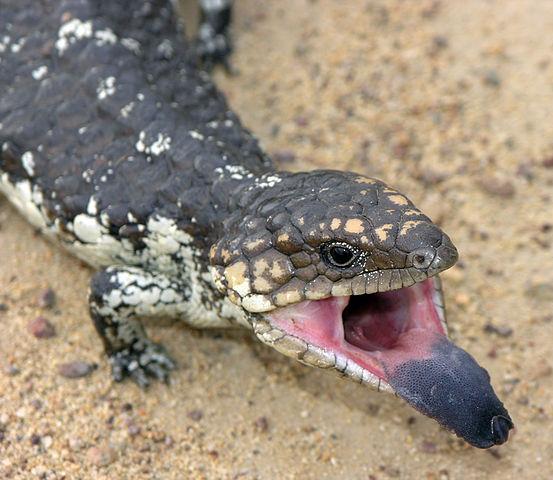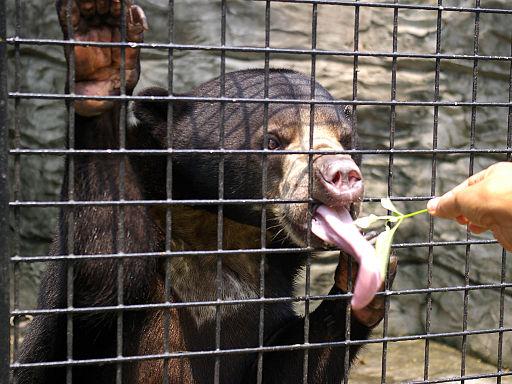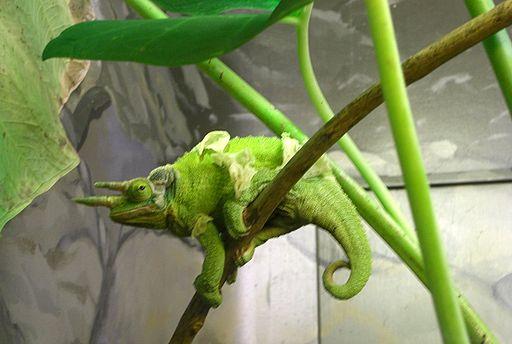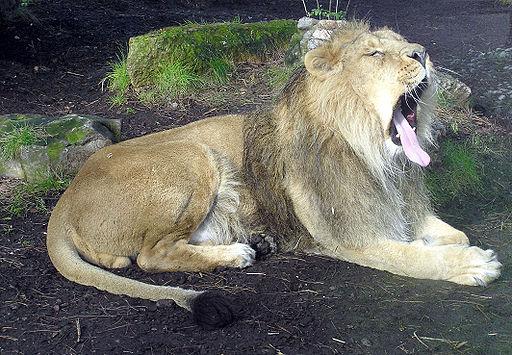Facts About Animal Tongues
How Do Animals Use Their Tongues?
You might think a tongue is just a tongue but there are a vast number of differences in the tongues of living organisms. In the animal kingdom, tongues are designed for a variety of tasks and have some amazing adaptations. Even cat and dog tongues are different. This was going to be article of ten different tongue types but it all became too interesting...
Tongues are adapted for specific purposes such as grooming, feeding and gathering information.
Tongues are useful when feeding, helping to move food around in the mouth, and being used to wrap round grass or leaves.

Such prehensile tongues probably reach their developmental peak in the giraffe and okapi, both of which have very long, prehensile tongues which they use to pluck leaves and shoots from thorny shrubs and to clean out their nostrils and wash their ears (truly!). The giraffe can extend its pointed, sticky tongue some 45 cm (18 inches) and the okapi 35 cm (14 Inches). The tongues are blue and tough, well able to cope with thorns of the acacias they love so well.

The tongue of the cow is also quite long and is used to wrap round lumps of grass which is why they are often put on a pasture before sheep, which prefer shorter grass. A cow can do an excellent job of cleaning out her feed bowl as the tongue can reach into all the corners.

A reptile with a blue tongue is the blue-tongued lizard of Australia. There are six species. The blue tongue helps the lizard bluff its predators. If an enemy gets too close, the lizard opens its mouth wide, pushes the tongue out and hisses. The tongue isn't particularly long but the mouth is a bright pink and the tongue a dark blue so there is a surprise element built in.
Animals that feed on termites and/or ants have specialised tongues too. Members of the anteater family all have long, sticky tongues which they use to poke into ant and termite nests. The bugs stick to the tongue which is flicked rapidly in and out of the mouth.

The giant anteater has a tongue that is only inch wide but which can reach 60 cm (2 feet) in length. The sticky saliva-covered tongue flicks in and out up to 150 times a minute, taking in a few thousand insects in a short time. The tongue extends past the pharynx and is attached deep within the thorax but not to the hyoid bone, which is a horseshoe shaped bone in the throat.
The pangolin, southern tamandua and tube-lipped nectar bat share this trait with the giant anteater. The nectar bat from Ecuador has the longest tongue of any mammal, relative to its size. Its tongue is 1 times the length of the body. The ends of the tongue of the nectar bat is covered with tiny hairs. These mop up pollen and nectar. Its long tongue is stored in its rib cage.
The numbat and echidna also have long, narrow, sticky tongues.

When considering carnivorous mammals, the sun bear may be the smallest of the bear species but has the longest tongue. It too likes ants, termites and honey as well as a variety of other foods.
A 60 ton blue whale has a 3 ton tongue. The right whale has a tongue well out of proportion to its body size but uses it like a giant scoop, filtering food into the mouth.
For sheer speed, the giant palm salamander, Bolitoglossa dofleini, wins. It can extend its tongue, in a similar way to the chameleon, 50 times faster than a person can blink.

The chameleon has a prehensile tongue which has a muscular, club-like structure at the tip. This is covered in thick mucous and forms a suction cup. Because of the velocity of the tongue (4 flies in 3 seconds they tell me!), bees and wasps do not have time to employ their defences (stings). The largest of the chameleon species has a tongue about two feet long. If the prey is out of reach, the chameleon bides his time until he gets within (tongue's) reach. At rest, the tongue is folded like an accordion round the processus entoglossus.
In the bird world, the woodpecker has a tongue which is often equally as long as the bird (depending on the species). The tongue curls up around the skull. When the bird locates an insect's tunnel in a tree, it worms its tongue into the tunnel. A barb on the end of the tongue is used to skewer the grub which is then drawn out of the tunnel and into the woodpecker's mouth.
Another variation is the protrusible trough-like or grooved tongues of nectar-feeding birds.
In some animals, the tongue is used to attract prey. The alligator snapper turtle lies on the bottom of a watercourse with the jaws wide open and wriggling its red tongue. The tongue looks for all the world like a worm. Fish are attracted to the 'worm', swim into the turtle's mouth and the turtle snaps its mouth shut.
At the other extreme, the alpaca and llama have an attached tongue which will only protrude an inch from the mouth. Thus they do not lick their newborn babies. The male dromedary (single-humped camel) has a soft palate which they inflate, producing a deep pink sac which lolls out of the mouth. This is intended to attract females. However, this is not a tongue.

Many animals use their tongues for grooming. The upper surface of 'big cats' like the lion have small bumps which act like a rasp cleaning every skerrick of meat off bones and removing parasites from their coats when they groom themselves. The tongue of the cat has rows of hooked spines which face backward. These papillae act like the bristles of a hairbrush and do an excellent job of cleaning the cat's coat. The roughness of the tongue can be felt if a cat licks your skin.

The tongue of the snake flicks in and out collecting airborne scent particles which are then passed over special organs in the mouth. The forked tongue gives directional information to the snake. By constantly using its tongue, a snake can remain aware of what is happening around it.
And finally what do men's penises and flamingos have in common? They both make use of erectile tissue. Flamingos feed only in shallow water, tilting their heads upside down into the water and moving their heads from side to side. The tongue sucks water into the front of the bill then forces it out through the sides. Fringed plates on the tongue trap aquatic crustaceans and algae. Erectile tissue on the floor of the mouth stiffens supporting the mouth and tongue while the bird has its head upside down.
So tongues serve a variety of purposes. The animal world is full of unusual and fascinating facts and the various shapes and uses of the tongue are just a small part of that world.
- The Science Behind How A Cat Drinks
By Linda Cole I'm one of “those” people who can sit and watch my cats for hours, observing what they do, how they move, how their whiskers quiver when watching a bird and other interesting things about them. Cats have a unique way of drinking...
- Simple Dog-inspired Crafts To Make
By Tamara L. Waters Are you a dog lover, or know someone who is “doggone crazy” about their canine friend? Whether you are looking to decorate your own home with man's best friend or you want a cute gift for someone else, homemade dog crafts are...
- These Animals Are Simply Amazing
Some species of animals are incredibly unique and fantastic. Here are some of the peculiar species in the animal kingdom. Image Source How long can you hold your breath? I will give you $1 million if you can beat the Weddell Seal. This fantastic creature...
- How To Cure Bad Breath
Bad breath is not only annoying, but embarrassing especially if you don't know the cause of it or how to get rid of it for good. Bad breath generally results from food odors and bacteria that build up in the mouth. Toothpaste and mouthwash helps to...
- Why Do Dogs Pant
What will you do when you feel hot? You may drink lots of water, take off your heavy clothes and wear light ones instead, and do everything you can to beat the heat. But the most important natural mechanism that helps you to fight the heat is your...
